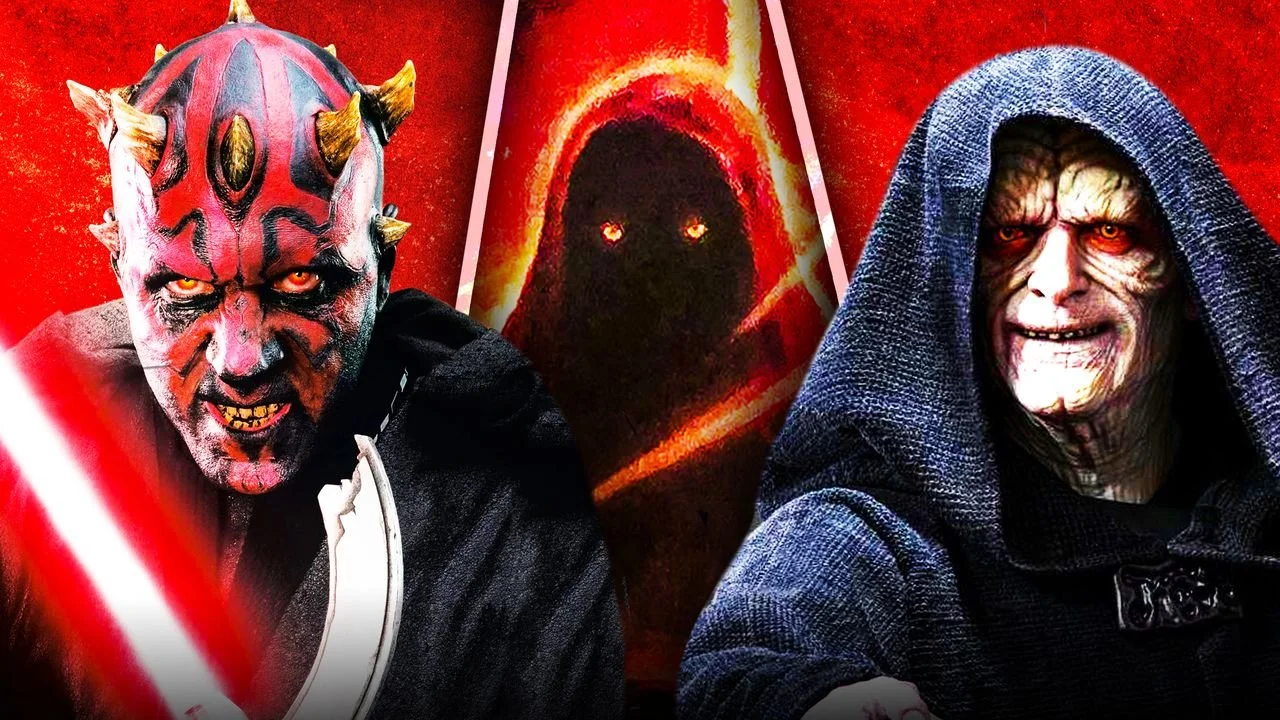'Secrets of the Sith' Retcons The Rule Of Two...Again
"Two there should be. No more, no less. One to embody power, the other to crave it."
The Rule of Two came about millennia ago in the galaxy far, far away during the tumultuous time of the Jedi-Sith War. The Sith were decimated by the Jedi, mostly as a result of their own infighting. The sole survivor Darth Bane realized that the Sith’s never-ending hunger for power led to internal struggles, weakening them, and thus allowing the Jedi to defeat them. He decided to establish the Rule of Two, which states that only two Sith Lords, a master, and an apprentice, could exist at any given time. For a long time, the main reason behind this rule is to prevent the Sith from destroying each other from within. However, the newly released Secrets of the Sith may have added more insight to this long-held Sith philosophy.
Secrets of the Sith, a canon reference book written from the point of view of Darth Sidious, is presented as the Sith’s personal notes detailing his knowledge in the dark side of the Force. The book has given a deeper insight into the Sith and the dark side of the Force beyond what has been presented in the movies and other media. In addition, we have come to learn that Palpatine’s interpretation of the Sith teachings may not be in line with deeply held traditions. Whether this approach leads to his eventual success and victory over the Jedi is up for discussion.
RELATED: Why The Rule of Two Doesn't Make Any Sense
Fans of the Star Wars saga had previously accepted that the “bad guys” were made up of Emperor Palpatine and Darth Vader. That was just how the Empire is. Then, the Rule of Two was introduced to the audience in The Phantom Menace during a conversation between Master Yoda and Master Mace Windu.
“Always two there are, no more, no less, a master and an apprentice.”
As more details about this philosophy were fleshed out in the Expanded Universe (now branded as Star Wars Legends), we would come to learn that there was more to the Rule of Two than preventing the Sith infighting. The small number dictated by the rule also allowed the Sith to operate in the shadows, playing the long game, slowly gaining influence until such time they could rise up and take the galaxy again.
Secrets of the Sith brings up another origin of the Rule of Two. In the discussion on the Force dyad, the book suggests that the Rule of Two is derived from the Prophecy of the Dyad, wherein two Force users can form a bond so strong that it spans across space and time, allowing for powerful Force abilities to emerge. Palpatine reveals that the Rule of Two is the result of every master’s attempt to form a dyad with their apprentice. Unbeknownst to them, a Force dyad is impossible for the Sith as it seems to require both the Light Side and Dark Side of the Force.
Some have brought up the disadvantages of the Rule of Two. The Sith Order is always at the brink of extinction. Unlike the Jedi who are made up of thousands, the Sith only has two. There is also a limitation in the pool of knowledge subsequent Sith can draw from. Everything a Sith knows must come from their master or their own arduous search for ancient knowledge. There is no other of their kind that they can discuss and “bounce ideas off.” After all, the constant vying for power prevents the master from sharing everything with their apprentice, and the apprentice from sharing new insights. The Rule of Two does not allow for any sort of “renaissance” or rapid growth of discoveries and innovations on the side of the Sith. However, the Sith are not concerned with the big picture. They are only passionate about their short-term gains.
The Sith’s quest for a Force dyad being behind the Rule of Two makes sense. They are mostly concerned with obtaining powers as quickly as possible. Thus, they do not concern themselves with the advantages of a large number of followers in their ranks when they could possibly create a Force dyad with immense power. Perhaps this was the key to Palpatine’s success. He recognized the futility in pursuing a Force dyad with another individual. He saw what he could achieve with minions and tools at his disposal. This explains why he apparently took on Darth Tyrannus as an apprentice before Darth Maul’s demise, or how he took on Darth Maul before Darth Plagueis’ death. This also explains why he has amassed many Sith acolytes on Exegol. In his eyes, they are all tools for his ascension, not apprentices in the strictest sense as he has no desire to pass on any knowledge.
Secrets of the Sith has introduced a different point of view on the Force into canon, specifically knowledge of the Dark Side of the Force. As the story of the Star Wars saga continues to expand, it is astonishing to see the worldbuilding elements of the Star Wars universe develop as well. The galaxy far, far away never stops evolving as we look forward and backward in time.
Disclosure: When you purchase something from the retail links that Culture Slate lists, we may earn a small commission on any sales that are made.
READ NEXT: Reasons Why Dooku Wasn't Really A Sith
Source(s): Screen Rant, Wookieepedia

